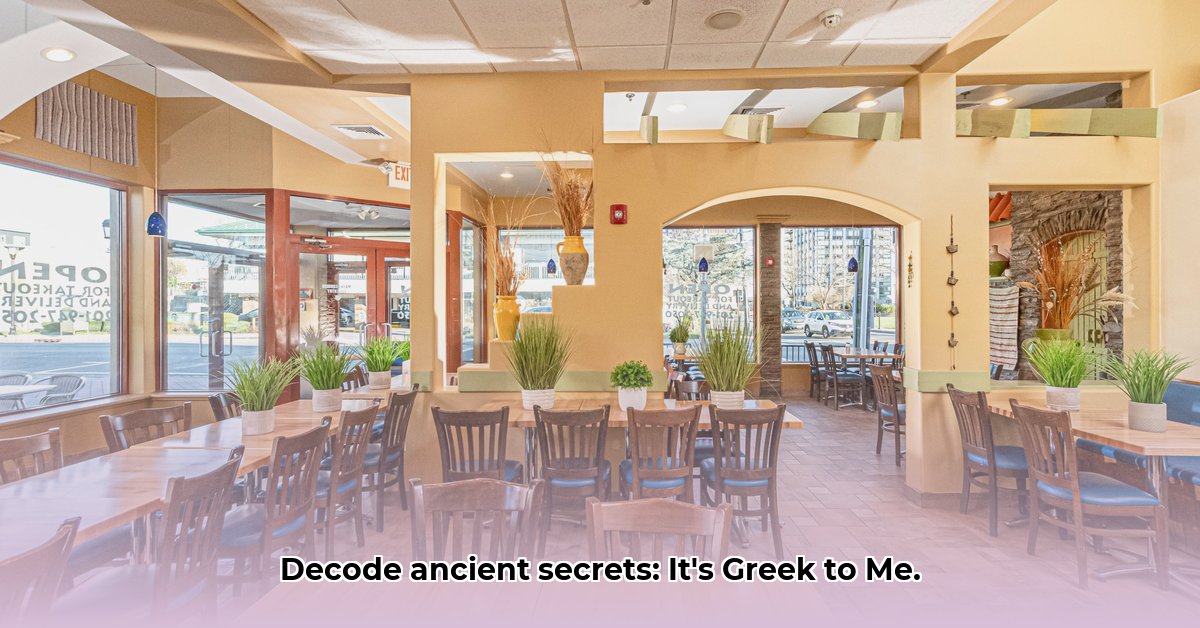The Genesis of an Idiom: From Medieval Scribes to Modern Metaphor
Have you ever encountered a concept so baffling, a text so riddled with jargon, or instructions so convoluted that you felt completely lost? You’ve likely expressed this feeling with the timeless idiom, “It’s Greek to me.” This seemingly simple phrase carries a rich history, echoing through centuries of linguistic evolution and cultural shifts. But what are the origins of this enduring expression, and how has its meaning transformed over time?
The roots of “It’s Greek to me” can be traced back to the medieval Latin phrase, “Graecum est; non legitur,” translating to “It is Greek; it cannot be read.” Picture medieval scribes diligently copying manuscripts, encountering passages in Greek – a language largely unfamiliar to them in the Latin-dominated world of Western Europe. Their frustration and inability to decipher these texts gave rise to the phrase, marking the beginning of its journey into idiomatic expression.
William Shakespeare, the undisputed master of the English language, played a significant role in popularizing the phrase. In his play Julius Caesar, Casca utters a version of the idiom, solidifying its presence in the English lexicon. While Shakespeare didn’t coin the phrase, his adoption of it significantly contributed to its widespread usage and enduring legacy. This begs the question: how profoundly did Shakespeare influence the development of modern English?
Initially, “It’s Greek to me” served as a literal description of the inability to understand the Greek language. Over time, however, its meaning broadened, evolving into a versatile metaphor for anything incomprehensible. Today, it encompasses a vast spectrum of confusing experiences, from deciphering complex mathematical equations to navigating the labyrinthine world of bureaucratic jargon. “It’s Greek to me” encapsulates the universal feeling of being utterly perplexed, regardless of the source of confusion.
Beyond Borders: Cultural Echoes of Incomprehension
The concept of expressing confusion through the analogy of an unfamiliar language isn’t unique to English. Similar idioms exist across a multitude of languages, reflecting a shared human experience of grappling with the unknown. The French express bewilderment with “C’est du chinois,” meaning “It’s Chinese,” while Spanish speakers use “Me suena a chino,” translating to “It sounds like Chinese to me.” These cross-cultural parallels highlight the universality of the sentiment: the frustration of incomprehension transcends linguistic boundaries. This raises a fascinating inquiry: why are these idioms so frequently linked to specific languages, and what does this reveal about cultural perceptions?
The specific language chosen in these idioms often reveals historical perspectives on linguistic difficulty or cultural distance. The use of “Greek” or “Chinese,” for instance, may suggest a perceived complexity or foreignness of these languages to those outside their linguistic communities. This linguistic phenomenon offers a glimpse into how cultures perceive and interact with each other.
In modern usage, “It’s Greek to me” remains a common and accepted idiom in informal conversations. Its wit and relatability make it an effective and engaging way to express confusion without resorting to overly aggressive or academic language. It’s worth considering: what other informal idioms do we employ to convey similar feelings of bewilderment, and how do these expressions contribute to the richness and dynamism of language?
Bridging the Communication Gap: Strategies for Clarity
The persistence of “It’s Greek to me” and its international counterparts underscores the enduring challenge of effective communication. In our increasingly interconnected and information-saturated world, minimizing misunderstandings becomes paramount. So, how can we proactively prevent those “It’s Greek to me” moments and foster clearer communication?
Audience Awareness: Tailoring your language and communication style to your audience’s specific background and level of understanding is crucial. Avoid using technical jargon or excessively complex sentence structures that could create confusion. Consider using simpler terms to avoid overcomplicating concepts and make difficult content more relatable.
Message Simplification: Clarity is the cornerstone of effective communication. Break down complex information into smaller, more manageable pieces. Employ clear, concise language, and actively avoid ambiguity. This approach increases the likelihood of your message being understood and retained. Using examples, and giving the audience an opportunity to ask questions are helpful techniques to add.
Feedback Integration: Don’t simply assume that your message has been understood. Actively seek feedback and encourage clarification to ensure your message has been effectively received. This proactive strategy can prevent future misinterpretations and significantly enhance communication clarity. Feedback is an ongoing process that gives the communicator a measurement and data to ensure the audience understands.
Visual Aids and Multimedia: Incorporating visual elements, such as diagrams, charts, or images, can significantly enhance understanding, especially when dealing with complex or abstract concepts. Similarly, using multimedia resources, like videos or interactive presentations, can make information more engaging and accessible. Visual aids can simplify complex information and cater to different learning styles.
Cross-Cultural Sensitivity: When communicating across cultures, be mindful of potential language barriers and cultural nuances that might impact interpretation. Research cultural norms and communication styles to avoid unintentional misunderstandings and ensure your message is conveyed respectfully and effectively. Cultural sensitivity fosters mutual respect and understanding amongst people from diverse backgrounds.
The enduring relevance of “It’s Greek to me” serves as a potent reminder that clear, concise, and culturally sensitive communication isn’t merely desirable—it’s essential for navigating the complexities of our interconnected world. By consciously implementing these strategies, we can bridge communication gaps, foster understanding, and ensure our messages resonate clearly, rather than being lost in translation. What communication strategies do you find most effective in your own experiences, and how have these techniques helped you avoid misunderstandings?
- Unlock Water’s Symbolism: A Cross-Cultural Exploration - April 20, 2025
- Identify Black and White Snakes: Venomous or Harmless? - April 20, 2025
- Unlocking Potential: Origins High School’s NYC Story - April 20, 2025















